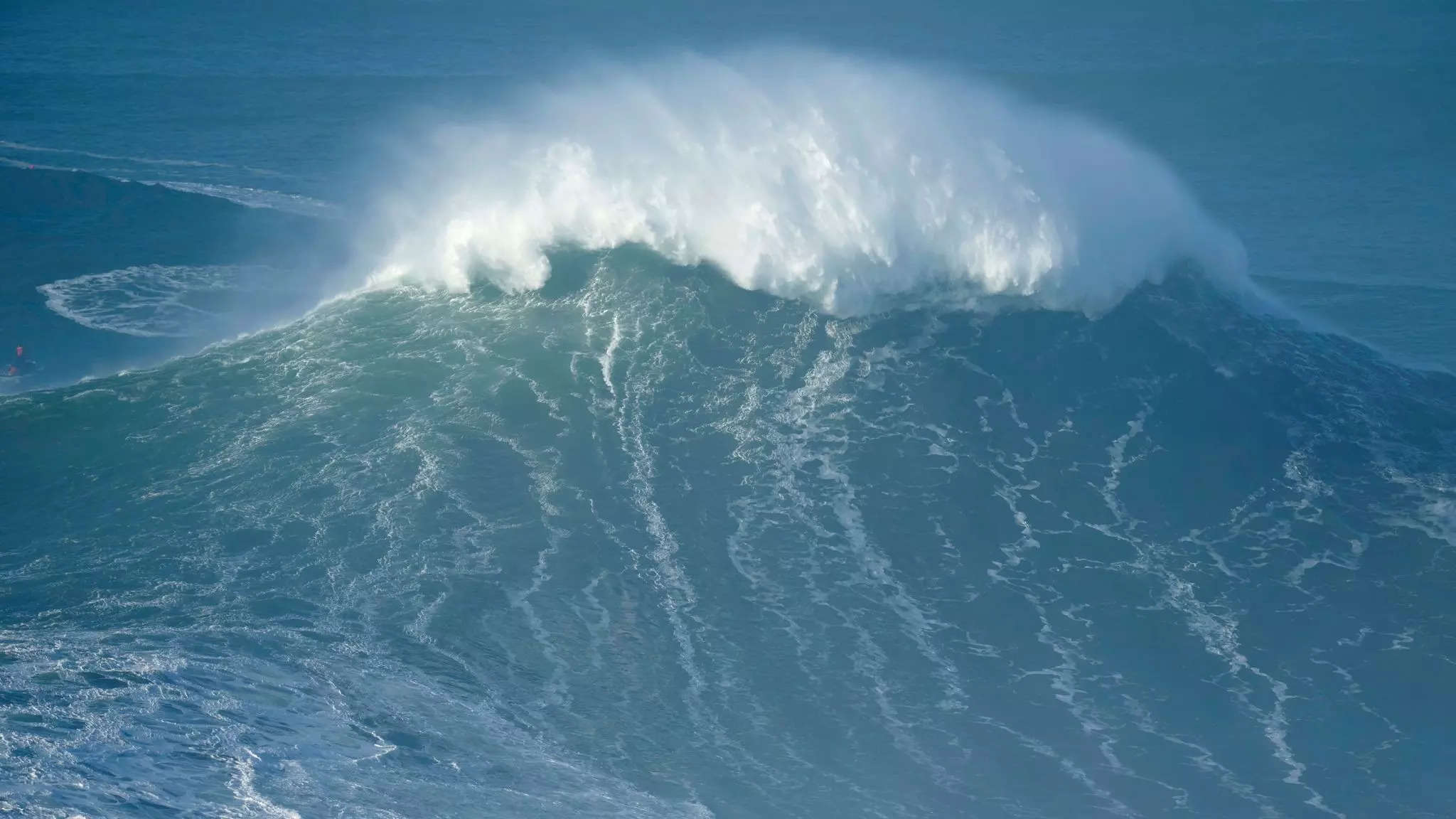A colossal rogue wave, reaching a staggering height of 17.6 meters (58 feet), had emerged off the coast of British Columbia in November 2020. This extraordinary phenomenon, officially confirmed recently, stands as the most extreme rogue wave ever recorded at the time, defying conventional expectations, reported Science Alert.
Rogue waves, once dismissed as maritime folklore, transitioned from myth to reality in 1995 when the Draupner wave, a nearly 26-meter-high (85 feet) wave, struck an oil-drilling platform off the coast of Norway.Subsequent to this groundbreaking incident, numerous rogue waves, some even occurring in lakes, have been documented. The Ucluelet wave, though not the tallest, stunnedscientists with its unprecedented size relative to the surrounding waves.
Scientists classify a rogue wave as any wave exceeding twice the height of its neighboring waves. The Draupner wave, for instance, measured 25.6 meters, while its counterparts were only 12 meters tall. In comparison, the Ucluelet wave was nearly three times the size of its peers, making it proportionally one of the most extreme rogue waves ever recorded, according to physicist Johannes Gemmrich from the University of Victoria.
Despite their rarity, rogue waves pose a significant threat to marine operations, offshore structures, and even beachgoers. The buoy capturing the Ucluelet wave, part of a network deployed by the research institute MarineLabs, was strategically placed offshore to study hazards in deep waters.
While both the Ucluelet and Draupner waves resulted in no severe damage or casualties, other rogue waves in history have been linked to missing ships and maritime disasters in the 1970s. With climate change predictions indicating an increase in wave heights in the North Pacific, the longevity of the Ucluelet wave’s record remains uncertain.
MarineLabs CEO Scott Beatty emphasized the importance of coastal intelligence in enhancing marine safety and decision-making. He noted, “Capturing this once-in-a-millennium wave, right in our backyard, is a thrilling indicator of the power of coastal intelligence to transform marine safety.” Researchers continue to strive towards a deeper understanding of rogue wave formation to enhance real-time measurements and predictive models for the benefit of maritime operations and coastal communities worldwide.
Rogue waves, once dismissed as maritime folklore, transitioned from myth to reality in 1995 when the Draupner wave, a nearly 26-meter-high (85 feet) wave, struck an oil-drilling platform off the coast of Norway.Subsequent to this groundbreaking incident, numerous rogue waves, some even occurring in lakes, have been documented. The Ucluelet wave, though not the tallest, stunnedscientists with its unprecedented size relative to the surrounding waves.
Scientists classify a rogue wave as any wave exceeding twice the height of its neighboring waves. The Draupner wave, for instance, measured 25.6 meters, while its counterparts were only 12 meters tall. In comparison, the Ucluelet wave was nearly three times the size of its peers, making it proportionally one of the most extreme rogue waves ever recorded, according to physicist Johannes Gemmrich from the University of Victoria.
Despite their rarity, rogue waves pose a significant threat to marine operations, offshore structures, and even beachgoers. The buoy capturing the Ucluelet wave, part of a network deployed by the research institute MarineLabs, was strategically placed offshore to study hazards in deep waters.
While both the Ucluelet and Draupner waves resulted in no severe damage or casualties, other rogue waves in history have been linked to missing ships and maritime disasters in the 1970s. With climate change predictions indicating an increase in wave heights in the North Pacific, the longevity of the Ucluelet wave’s record remains uncertain.
MarineLabs CEO Scott Beatty emphasized the importance of coastal intelligence in enhancing marine safety and decision-making. He noted, “Capturing this once-in-a-millennium wave, right in our backyard, is a thrilling indicator of the power of coastal intelligence to transform marine safety.” Researchers continue to strive towards a deeper understanding of rogue wave formation to enhance real-time measurements and predictive models for the benefit of maritime operations and coastal communities worldwide.
Denial of responsibility! Swift Telecast is an automatic aggregator of the all world’s media. In each content, the hyperlink to the primary source is specified. All trademarks belong to their rightful owners, all materials to their authors. If you are the owner of the content and do not want us to publish your materials, please contact us by email – swifttelecast.com. The content will be deleted within 24 hours.


